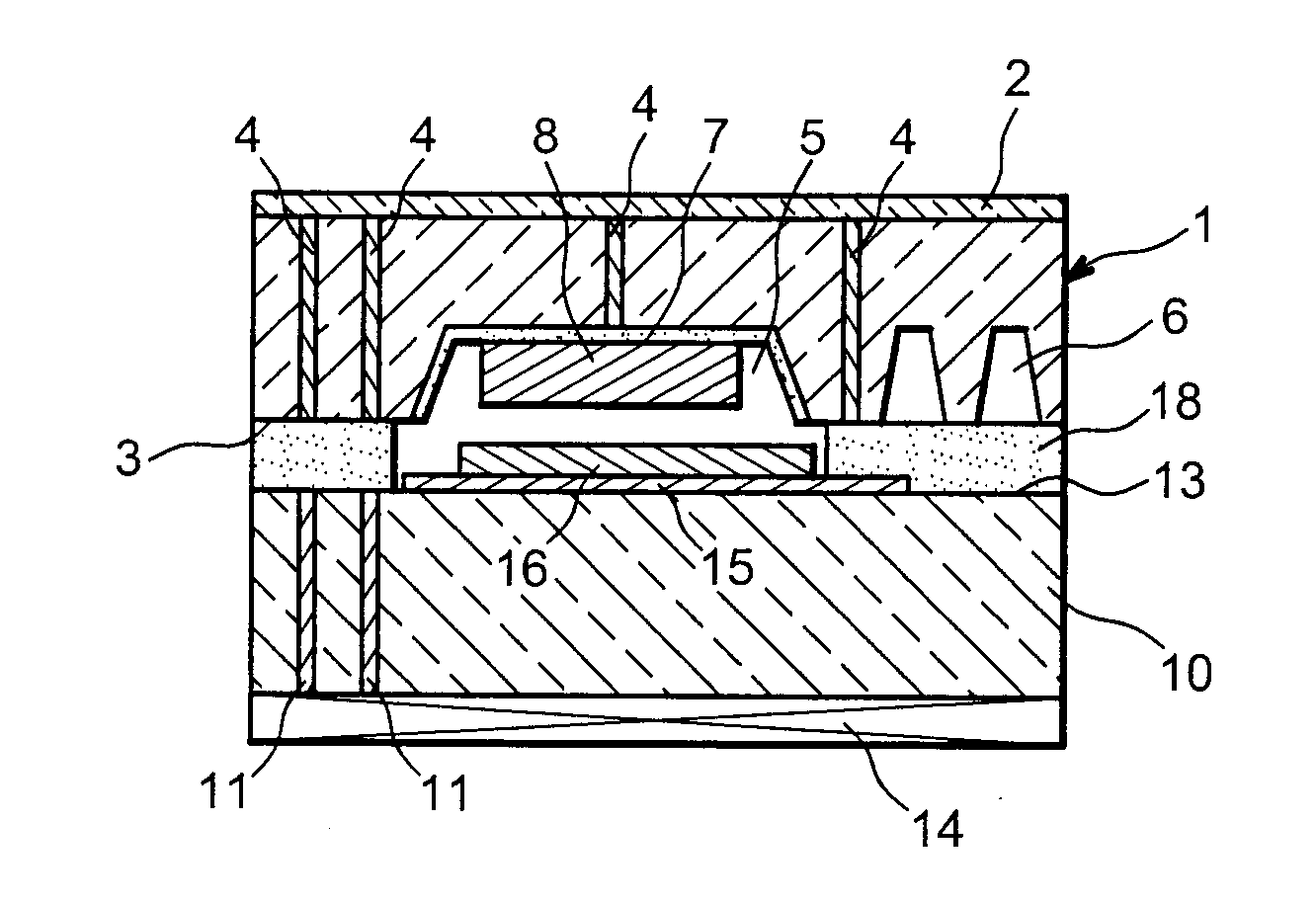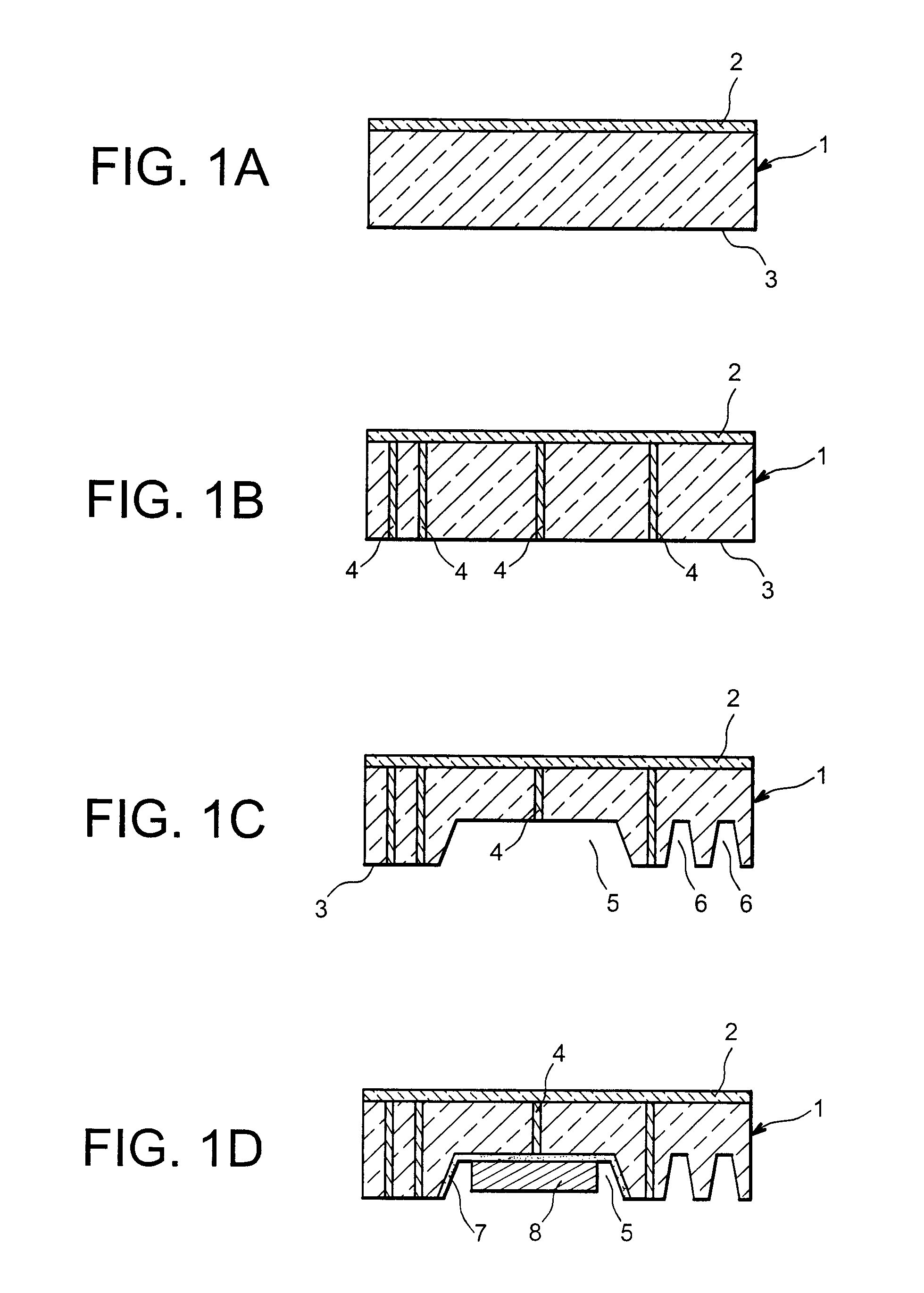Integrated microcomponent combining energy recovery and storage functions
a technology of energy recovery and storage functions, applied in the direction of secondary cell servicing/maintenance, cell components, sustainable manufacturing/processing, etc., can solve the problems of reducing the size to a micrometric scale, reducing the amount of energy stored, and unable to implement techniques
- Summary
- Abstract
- Description
- Claims
- Application Information
AI Technical Summary
Benefits of technology
Problems solved by technology
Method used
Image
Examples
Embodiment Construction
[0022] The purpose of the invention is to obtain an integrated component capable of combining the recovery, storage and possibly the control of energy, all in a very small volume (capable of having a thickness under 1 mm and ranging from several μm2 to several cm2 at the surface) and with the maximum onboard energy. This is obtained by utilising the volume of the substrates possibly for the recovery of energy and / or the production of the onboard intelligence (integrated circuit) so as to produce the energy storage.
[0023] A first object of the invention relates to a microcomponent including an electrochemical storage source, characterised in that it includes a first substrate having a contact face and a second substrate having a contact face, at least one cavity being formed in at least one of the substrates from the contact face, the two substrates being integrated with said contact faces by sealing means, wherein said cavity, thus sealed, contains the electrochemical storage sourc...
PUM
| Property | Measurement | Unit |
|---|---|---|
| thickness | aaaaa | aaaaa |
| capacitance | aaaaa | aaaaa |
| thickness | aaaaa | aaaaa |
Abstract
Description
Claims
Application Information
 Login to View More
Login to View More - R&D
- Intellectual Property
- Life Sciences
- Materials
- Tech Scout
- Unparalleled Data Quality
- Higher Quality Content
- 60% Fewer Hallucinations
Browse by: Latest US Patents, China's latest patents, Technical Efficacy Thesaurus, Application Domain, Technology Topic, Popular Technical Reports.
© 2025 PatSnap. All rights reserved.Legal|Privacy policy|Modern Slavery Act Transparency Statement|Sitemap|About US| Contact US: help@patsnap.com



